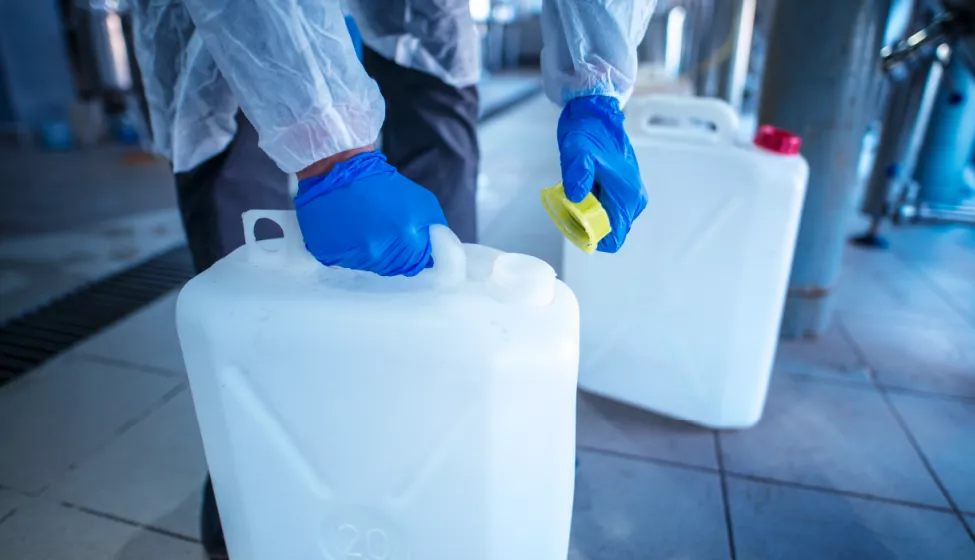October 20, 2022
What should environmental managers be thinking about now?
The Environmental Protection Agency has proposed designating two specific per- and polyfluoroalkyl substances (PFAS) — perfluorooctanoic acid (PFOA) and perfluorooctanesulfonic acid (PFOS) — including their salts and structural isomers, as hazardous substances under the Comprehensive Environmental Response, Compensation, and Liability Act, also known as CERCLA or Superfund. This proposed rule has important implications for environmental site investigations and cleanups as well as cost recovery.
New site investigations, cleanups & reopened sites
The key impact of this proposed designation is that EPA and state agencies would be able to respond to PFOA and PFOS releases under CERCLA without the current requirement for an imminent and substantial danger finding. PFOA and PFOS investigations and remediation, which to date had often been voluntary or enacted under site-specific state requests, would be required of potentially responsible parties. Many states have remediation programs that incorporate federal hazardous substances lists, so the reach of EPA's action would extend beyond CERCLA sites.
Designating PFOA and PFOS as CERCLA hazardous substances would likely trigger investigations of these compounds at numerous sites and bring new sites under CERCLA jurisdiction. Some previously closed CERCLA sites may have to reopen, while others may require additional responses when PFOA or PFOS are considered during required five-year reviews.
Designating PFOA and PFOS as hazardous substances would also trigger the cost recovery and contribution provisions under CERCLA — both from public entities as well as private parties.
At other existing sites, the designation may delay ongoing remediation as additional assessments are conducted and remedial plans reassessed. CERCLA designation may also complicate ongoing PFAS responses managed under other regulatory frameworks if a site ultimately falls under CERCLA.
Complications over cleanup levels
The lack of enforceable thresholds for PFOA and PFOS across most of the country will likely complicate environmental investigations and the selection and design of remedies. In the proposed designation, EPA acknowledged the lack of cleanup levels that would trigger remediation as a significant unknown. While certain states (e.g., New Jersey) have established maximum contamination levels for PFOA and/or PFOS in drinking water and set these levels as standards for groundwater, most states and EPA have not issued cleanup levels for water, soils, sediments, or other media. Furthermore, while EPA discussed the existence of precursor compounds that can degrade to PFOA and PFOS in the environment, it is unclear how or whether releases of these precursor compounds will be considered.
Cost recovery
Designating PFOA and PFOS as hazardous substances would also trigger the cost recovery and contribution provisions under CERCLA — both from public entities as well as private parties. Governments, public entities, and private parties could recover necessary PFOA and PFOS environmental response costs from potentially responsible parties.
Due to CERCLA's joint and several liability framework, even parties who never used or handled PFOA or PFOS may incur significant investigation and remediation costs. EPA issued an economic analysis in tandem with the proposed hazardous substance designation; however, given the uncertainties in the number of potentially impacted sites, the lack of cleanup levels, and developing treatment technologies, EPA did not attempt to quantify the costs for investigating and remediating sites impacted with PFOA or PFOS. Based on the part-per-trillion screening levels and expensive treatment methods, the cost of PFAS remediation could be significantly higher than for conventional contaminants.
Uncertainty over small quantities of PFOA & PFOS
PFOA and PFOS are often detected at very low levels throughout the environment, such as in soils in public parks and precipitation. It is unknown whether CERCLA designation would impact sites with very low concentrations of PFOA and PFOS where those substances were not specifically used.
EPA has indicated that the 1-lb reporting requirement under this preproposal may be lowered upon collection of data on the size of releases. The lack of regulatory thresholds — including maximum contaminant levels and the potential lowering of the 1-lb reporting limit — in the face of hazardous substance designation also creates uncertainty for entities that routinely handle small quantities of PFAS.
Treated wastewater and biosolids may also contain low-level concentrations of PFOA and PFOS. While EPA is currently working on a risk assessment to support regulation of PFOA and PFOS in biosolids, until said regulations are promulgated, there will be uncertainty in how to handle and where to dispose of biosolids from wastewater treatment plants or residuals from pulp and paper facilities.
This proposed rule is open for public comment until November 7.
How Exponent Can Help
Exponent's multidisciplinary consultants are experienced in navigating the continually changing PFAS regulatory landscape and well-equipped to offer guidance and resources to help clients adapt to these changes. The integrated expertise of our environmental engineers, ecologists, toxicologists, polymer scientists, materials chemists, chemical engineers, and chemical regulation professionals can help assess the potential risks and liabilities associated with PFAS at your facility, including PFAS source identification, chemical fingerprinting, environment fate and transport analyses, and cost allocation.





